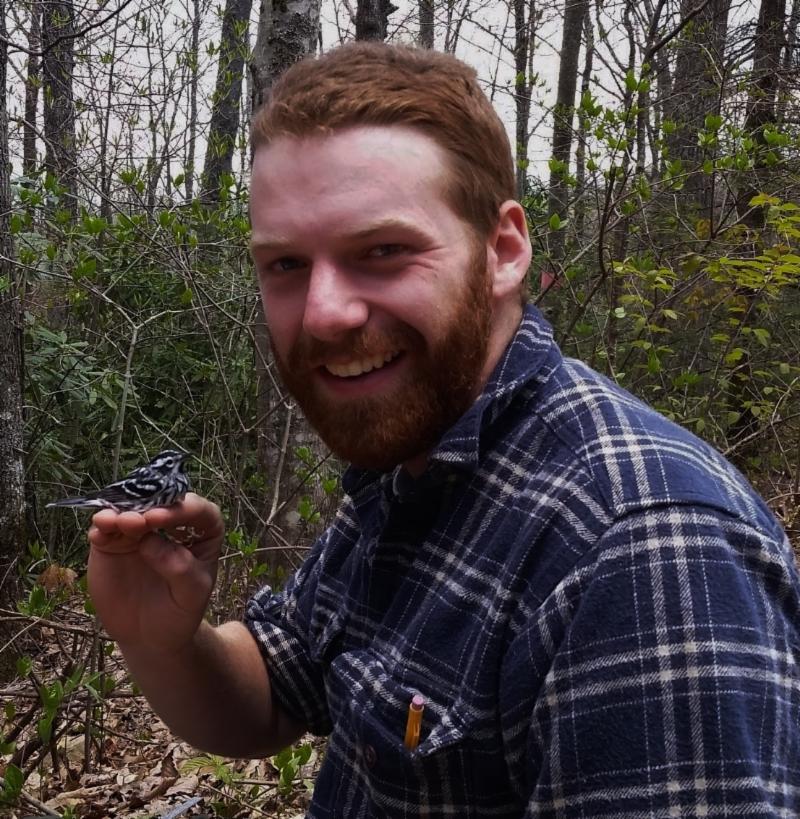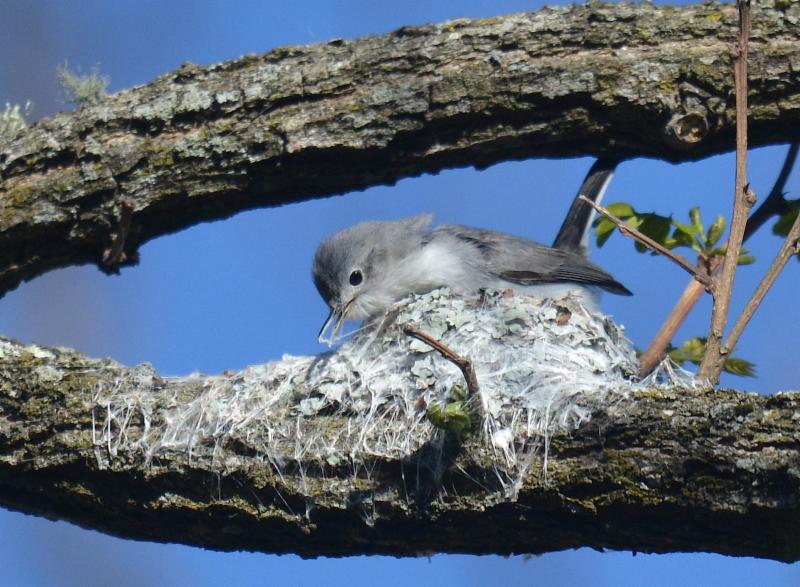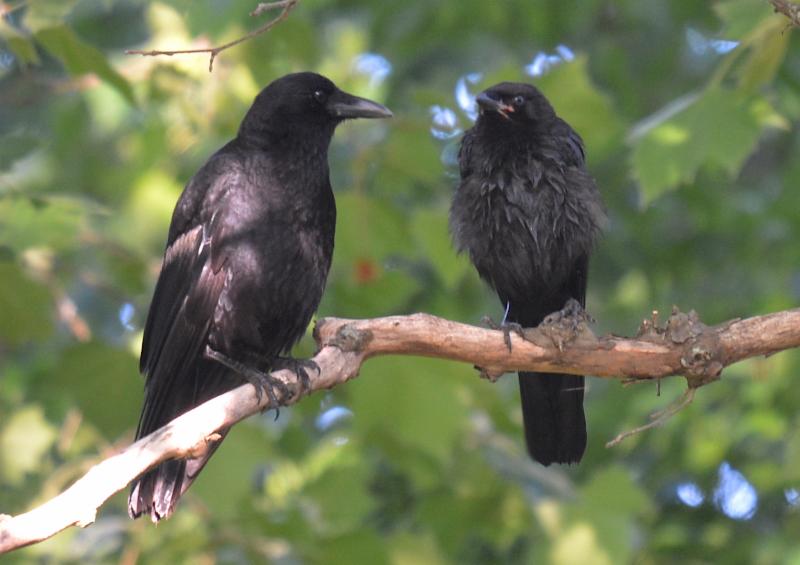|
Sat, May 12, 8am
Jackson Park Birdwalk
Tues, May 15, 7pm
EMAS Program
"A Bird's-eye View of Climate Change."
Reuter Center, UNCAsheville
Sat, May 19, 8am
Swannanoa Valley Birdwalk
Sat, June 2, 8am
Beaver Lake Birdwalk
Sat, June 9, 8am
Jackson Park Birdwalk
Tues, June 12, 7pm
EMAS Program
"The Birds and the Bees: Why Pollinators Matter."
Reuter Center, UNCAsheville
Sat, June 16, 8am
Swannanoa Valley Birdwalk.
|
|
Sierra Club program
Come hear from local leaders about how the new Blue Horizons Project will lead us to a cleaner energy future.
June 7, 7:00 p.m. at the Unitarian church, 1 Edwin Place, Asheville.
|
For the latest schedule and any changes:
|
|
|
|
|
 |
| Golden-winged Warblerby Alan Lenk |
 |
The three EMAS Birdathon teams have their binoculars, sandwiches, and full tanks of gas and are ready for the Birdathon. It's a marathon day spent birding from dawn to way past dark to raise money for bird conservation.
They are ready to go but this event cannot succeed without you because it is your contributions that make the Birdathon
a success!
This year we will award a $1,000 scholarship to a UNCAsheville Environmental Science student. The remaining donations will support an American Bird Conservancy project in Nicaragua aimed at increasing highland forest connectivity and creating shade-grown coffee systems for the benefit of the Golden-winged Warbler and Wood Thrush, as well as for resident and other neotropical migratory birds.
While the teams have fun vying to out-bird each other, we also do our best to raise money for conservation. We hope you will support our efforts with your contribution. Please access the donation form here and send it to our EMAS address or bring it to the May meeting. Our May meeting is on Tuesday the 15th and we encourage everyone to come and support the Birdathon.
Thank you very much for your generous donation!
|
What would
 |
|
 |
Black-throated Blue Warlber by Alan Lenk
|
springtime in the Southern Appalachians be without the arrival of the beautiful migratory species that nest or refuel here? Think of the Black-throated Blue, Chestnut-sided, Magnolia, and Blackburnian Warblers to name a few. These populations of cool-adapted species are essentially northern birds that are at the southern edge of their range in our mountains and, unfortunately, they are vulnerable to the impacts of climate change.
We know that birds time their migration to arrive in North America in Spring as food sources become abundant. But what happens when climate change ushers in an earlier and earlier Spring, trees leaf out earlier, and the outbreak of insects and caterpillars is also early? What happens to the thousands of migrants who arrive in North America and are left with a diminished food supply?
Since 2003, scientists at the University of Georgia have been surveying Black-throated Blue Warbler populations in the Southern Appalachians to begin to answer these important questions about the impacts of climate change on our birds. One research focus has been the study of the effects of caterpillar abundance on breeding birds at different elevations. At our program, UGA doctoral candidate Ryan Chitwood will discuss the results of this research and explain factors impacting the breeding success of the Black-throated Blue Warbler.
 Ryan Chitwood has spent several years working on a Southern Appalachian breeding bird study of Black-throated Blue Warblers and other breeding songbirds in the Nantahala National Forest. Originally from Columbus, GA, Ryan first fell in love with the southern Appalachian Mountains and its biota as an undergraduate student at the University of Georgia. When not attending to his research duties of target-setting and searching for bird nests, Ryan serves as the conservation chair of the Athens Audubon chapter. Ryan Chitwood has spent several years working on a Southern Appalachian breeding bird study of Black-throated Blue Warblers and other breeding songbirds in the Nantahala National Forest. Originally from Columbus, GA, Ryan first fell in love with the southern Appalachian Mountains and its biota as an undergraduate student at the University of Georgia. When not attending to his research duties of target-setting and searching for bird nests, Ryan serves as the conservation chair of the Athens Audubon chapter.
EMAS programs are free and open to the public.
A suggested $5 or donation of your choice is requested only at our May Birdathon fundraiser program. Thank you!
|
|
"There is an exquisite purity in the joyous carol of the Grosbeak;
his song tells of all the gladness of a May morning;
I have heard few happier strains of bird-music.
With those who are deaf to its message of good cheer I can only sympathize,
pitying the man whose heart does not leap with enthusiasm at the sight of rival males dashing
through the woods like winged meteors, leaving in their wake a train of sparkling notes."
Frank Chapman
I have always
 been interested to know which particular species stimulated an individual's fascination with birds. For John Burroughs, it was a Blackthroated Blue Warbler; for Walt Whitman, a Hermit Thrush. Roger Tory Peterson had his famous Yellow-shafted Flicker epiphany, and Elliot Coues, his Scarlet Tanager first love. For me, it began with a sighting of a Rose-breasted Grosbeak. Besides its beauty, the song of the Grosbeak is what enthralls many people, as revealed in the following article.
Follow this link and read why.
|
 Chapter Used Book Sale
Chapter Used Book Sale
|
A great collection of gently used nature books will be available for sale at the May EMAS meeting. Thanks to donations from some generous birders, we've got a very interesting selection of books ranging from the Field Guide to Borneo to a John Audubon biography. They've been priced very reasonably, and all book sale receipts will benefit the EMAS chapter.
|
 Nominations for Nominations for
EMAS Board of Directors
|
The EMAS Nominating Committee is pleased to announce that they will present the following slate for vote by the membership at the June 19 meeting. (If there are any other nominations for the board, they will be accepted from the floor). We have three new At-large members to present to our membership. For the very first time, we have a Student At-Large position to be filled by Kristin Black, a student at UNCAsheville. We also have two excellent At-large Board of Directors candidates, Cathy Walsh and Danielle Dibella-Lenaway. Please take the time to get to know our candidates by reading their bios here. Then come to the June EMAS program meeting where you will get a chance to meet them. The board thanks the candidates for their willingness as volunteers to serve on the board.
|
|
The Shape of Waterthrushes
|
For many
 |
|
 |
Louisiana Waterthrush
by Jim Poling
|
winter-weary birders, the loud ringing song of the Louisiana Waterthrush is certainly music to our ears. With woods still dark and leafless, and perhaps some ice remaining on pools and river fringes, this active warbler is among the first to return after its winter sojourn in the tropics. The loud song is designed to be heard over the sound of the fast-flowing rivers where it prefers to nest. Despite the song, finding the bird can be frustrating as it often perches high above the river where its brown plumage makes it inconspicuous. A loud, somewhat buoyant call-note announces his departure as he flies down the river to feed. Louisiana Waterthrush breed on many of our rivers here in Western North Carolina with some of the best sites being along the Green River Cove in Polk County, the Davidson River from Pisgah Forest up to the Blue Ridge Parkway and along Bent Creek at the North Carolina Arboretum. Knowing the song is one of the most important things, as another cove forest species, the Swainson's Warbler, lives in the same habitat and can sound a little similar.
Simon RB Thompson
Ventures Birding Tours
|
Text and Photos by Jay Wherley
|
 May is arguably the most exciting month for birders at Beaver Lake Bird Sanctuary. Just about anything can show up - as shown already with a singing Swainson's Warbler marking the first time that species has been observed on site. May is arguably the most exciting month for birders at Beaver Lake Bird Sanctuary. Just about anything can show up - as shown already with a singing Swainson's Warbler marking the first time that species has been observed on site.
Over the years,  May has brought 27 species of "woodwarblers" to Beaver Lake. Some of those species even stay around to breed in the sanctuary (e.g. Hooded Warbler, Common Yellowthroat, Yellow Warbler). Other species are also busy nesting. The Blue-gray Gnatcatchers seem especially prolific this year with several pairs already establishing nests. Even the American Crow is found busy attending to young. May has brought 27 species of "woodwarblers" to Beaver Lake. Some of those species even stay around to breed in the sanctuary (e.g. Hooded Warbler, Common Yellowthroat, Yellow Warbler). Other species are also busy nesting. The Blue-gray Gnatcatchers seem especially prolific this year with several pairs already establishing nests. Even the American Crow is found busy attending to young.
* * *
Notable recent sightings at Beaver Lake include Swainson's Warbler, Prothonotary Warbler, and Peregrine Falcon.
|
|
|